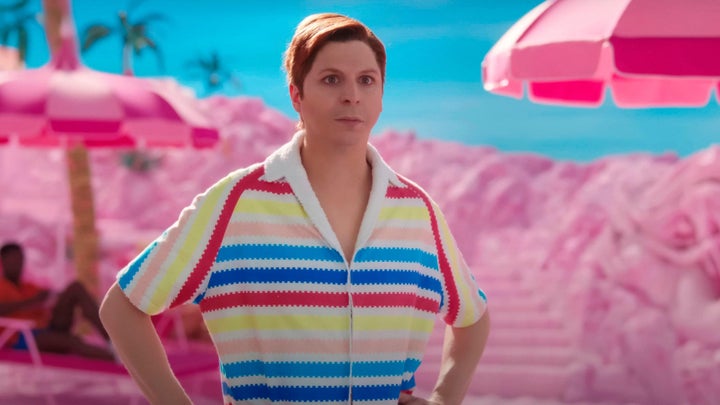
The pink, glittery dust has settled on “Barbenheimer” weekend, and with that, a number of revelations have come to light — including that people, it turns out, still want to go to the movies! And that Ryan Gosling is so much more than just Ken. And most importantly, that there are far more obscure, lesser-known and questionable Barbie dolls in the world than we remembered.
“Barbie” writer and director Greta Gerwig was given what feels like a surprising amount of creative autonomy from Mattel for her take on the iconic doll’s tale. She did not sidestep some of the toy giant’s more questionable decisions or public controversies. Many of them pop up during the film, prompting audiences to wonder: “That couldn’t be real, could it?”
But real they are. Real dolls, anyway. From Ken’s “buddy” Allan to Growing Up Skipper, here are all the very real and, in some cases, very weird Barbies that appear in the film.
Warning: “Barbie” spoilers and truly puzzling information ahead.
Allan
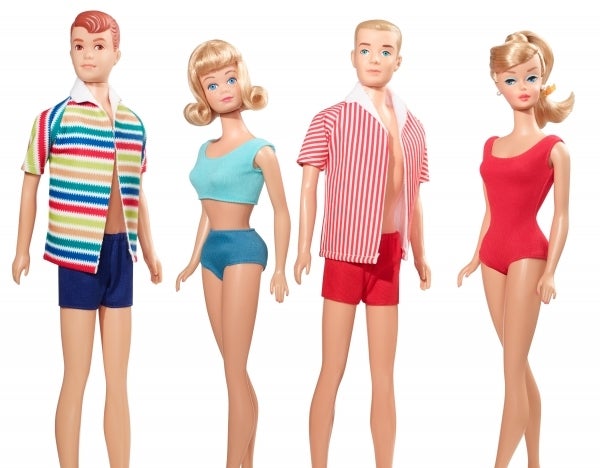
If Ken is “just Ken,” Allan is … only Allan. And literally the only Allan, since his character in the film is the only one of his kind, unlike the many Kens and Barbies.
Allan was introduced as Ken’s best friend in 1964. According to History, Mattel actually used the fact that he could fit into all of Ken’s clothes as a selling point, but Attitude notes that this also led to rumors that Ken and Allan were a little too close. After a very brief life of living in Ken’s shadows (and in the same striped shirt as in the film), Allan was discontinued that same decade before being rereleased as Midge’s husband in the ’90s.
After watching Michael Cera’s awkwardly endearing turn as the lonesome sidekick, we wouldn’t be surprised if he went promptly back into production today.
In the film, “Allan is sort of like a person without a group that he belongs to, he’s kind of a loner, in a way,” Cera said in an interview. “I think the joke about that, at least how I interpret it, is that Allan the doll ... didn’t have a very successful run. [He’s] sort of this marginalized person in this world of Kens.”
Attitude reports that “conspiracists” think Allan was paired with Midge in the ’90s to “canonise Allan as heterosexual,” but it hasn’t stopped Allan from becoming something of a queer icon over the years.
“As a non-binary person I relate to Allan a lot!” said one TikToker in a slew of comments. “I see him as my rep ✨ not quite Barbie, not quite Ken. Just ✨ Allan✨ .”
Pregnant Midge
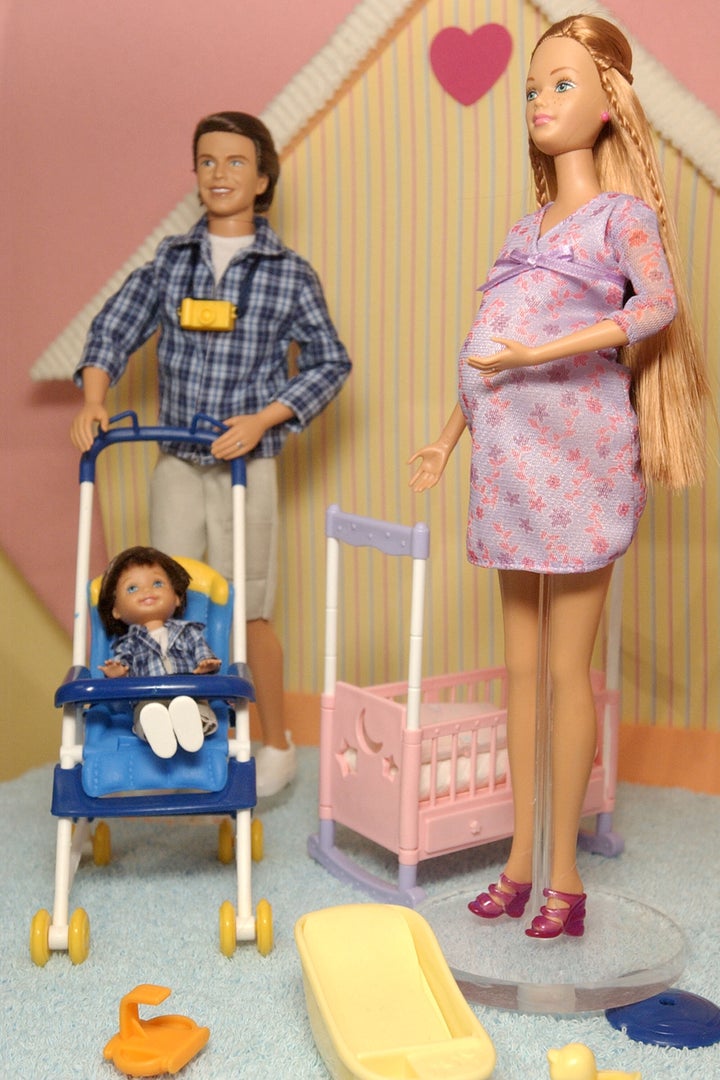
As we mentioned, one of the more refreshing aspects of seeing Barbie Land through Gerwig’s pink-tinted lens was the director’s unwillingness to shy away from the toy company’s missteps.
We’re reintroduced to Pregnant Midge early on in the movie, and she comes back to haunt the Mattel execs later on in the film, too. A not-yet-pregnant Midge originally debuted in 1963, and there’s even a Wedding Party Midge gift set from some 30 years later that includes Midge and Allan (for some reason renamed “Alan”) alongside Barbie and Ken as bridesmaid and best man.
In 2002, Pregnant Midge was released; the doll featured a removable pregnant belly, prompting people to accuse Mattel of “promoting teen pregnancy,” even though, as CNN reported, she was by then canonically a married woman with a 3-year-old child.
Earring Magic Ken
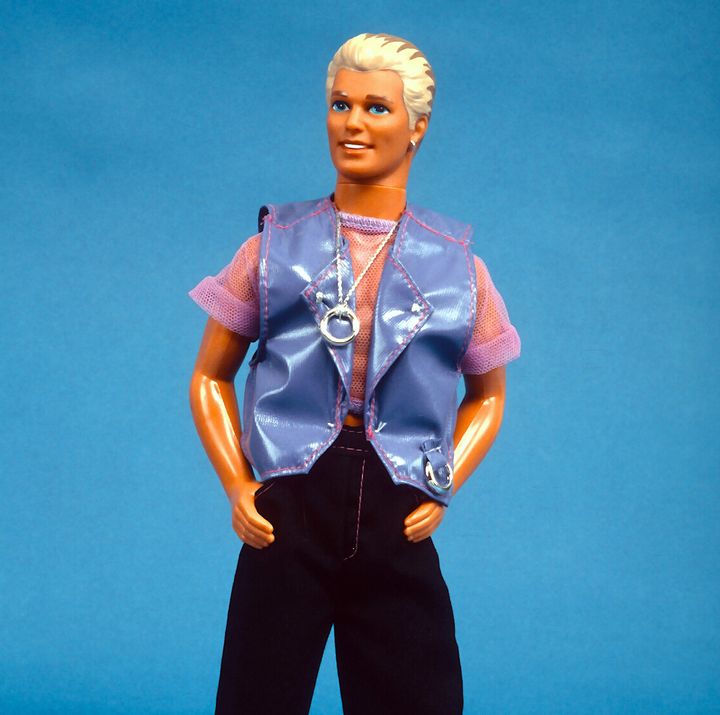
What’s less boring than Ken? A Ken in a mesh purple shirt and pleather vest, with slicked-back bleached-blond highlights, an earring, of course, and a … necklace.
This 1993 model of Ken, long referred to as the time Mattel “made Ken gay,” quickly became one of the company’s best-selling dolls and a true queer icon before being recalled just months later after then-manager of marketing and communications, Lisa McKendall, was forced to give one of the greatest corporate statements of all time.
“We’re not in the business of putting cock rings into the hands of little girls,” the statement read. There’s at least one Earring Magic Ken currently available on eBay for $154. (Just saying.)
Palm Beach Sugar Daddy Ken
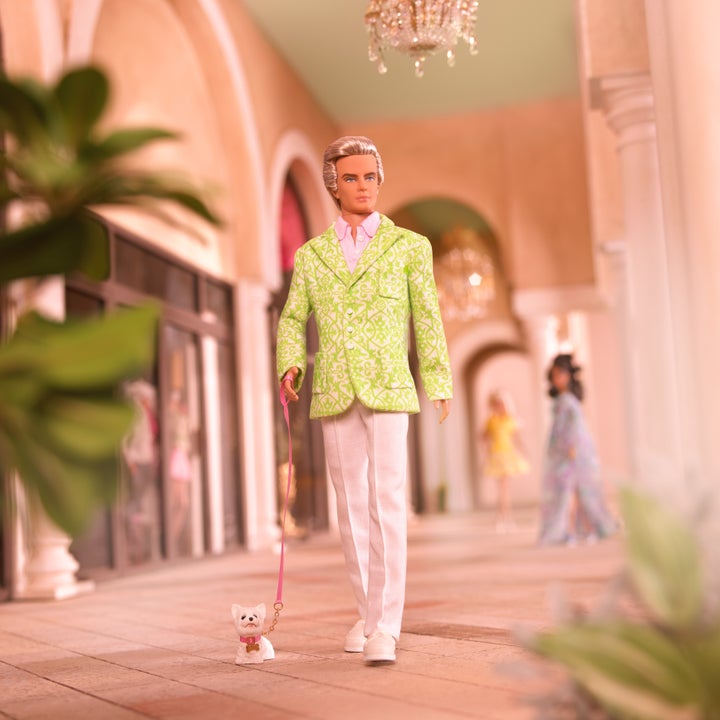
His release wasn’t the most puzzling Barbie decision (see Growing Up Skipper below), but it was strange nonetheless. Palm Beach Sugar Daddy Ken, which is exactly what it sounds like, was a 2009 doll marketed to adults wearing a lime-green jacquard blazer and toting a tiny white dog named Sugar. He also came with swim trunks, slides and sunglasses, and apparently retailed for a whopping $82. In the film, he claims that his name is a misunderstanding — he’s merely Sugar the dog’s daddy. Uh-huh. Sure.
Video Girl Barbie
“I have a TV in my back,” Video Girl Barbie quips in the film, deadpan, while showing off her embedded screen to the human visitors in Barbie Land. This version of Barbie may seem innocuous, if not a bit weird, but the FBI said differently.
The agency put out a “cyber crime alert” following her release in 2010, citing her ability to stream up to 30 minutes of recording onto a computer as a potential “dangerous tool for pedophiles.” Yikes.
Growing Up Skipper
Skipper, Barbie’s little sister, was first released in 1964. In 1975, Mattel decided it was time to let her grow up before your very eyes. This strange doll was advertised as two dolls in one: Skipper as the girl we knew, and, by twisting her arm around, a teenage Skipper who grew upward and also outward. Yes, her breasts enlarged as she got taller. You can see this in action in a commercial for the doll, which was perhaps predictably discontinued in 1977.
Tanner The Dog
When Barbie, err, Margot Robbie, enters Weird Barbie’s house, she is greeted by a strange-looking dog. A strange-looking pooping dog. “That surely can’t have been real,” you might have thought to yourself.
And you would have thought wrong. Tanner the dog came with Barbie and did things a real dog does, like accepting treats that make their way through his digestive tract and out of his body by way of tiny brown pellets.
A recall for the Barbie and Tanner play set was issued because its poop scoop accessory contained a small magnet that could come loose. The U.S. Consumer Product Safety Commission said that if multiple magnets were swallowed by a child, they could attract each other and cause a potentially fatal intestinal perforation or blockage.